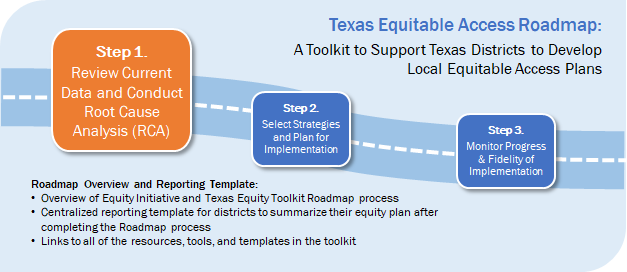
This is the first step in the Roadmap—an overview of the three steps can be found here, with links to the resources for each step of the process.

This tool is designed to help district leaders strategically plan for the equity plan by revisiting their existing equity plan to determine its efficacy and reviewing current district data.
District leaders will begin this process by reviewing their previous equity plan, determining the success of specific, existing strategies, and referring to current district data. Types of district data will include all data that pertains to effective instruction including but not limited to: student achievement data, student demographics, teacher experience, and certification for out-of-field. Then, district leaders will engage in conducting a root cause analysis described here in Step 1.
The RCA process centers on data review to identify possible root causes of the equity gap. The protocol guides teams through a process of identifying the perceived reasons they think they are facing each equitable access challenge and continuing to dive deeper until they believe they have reached the root causes that have resulted in their equitable access gaps. This is a data-driven activity that involves reviewing equity gaps and data, and interpreting the data to unearth the root causes of your district’s equity gaps. For example, are student populations who are growing academically at a slower pace than their peers doing so because they are more frequently taught by inexperienced or out-of-field teachers, or are they experiencing similar teachers as their peers? If so, what changes to hiring, teaching assignments, or master scheduling can the district make to rectify that difference? If these student populations are experiencing similar teachers, why are their teachers able to produce more growth in some student populations and less growth in others? What coaching and pedagogical support does the campus and district offer to teachers in these instances?